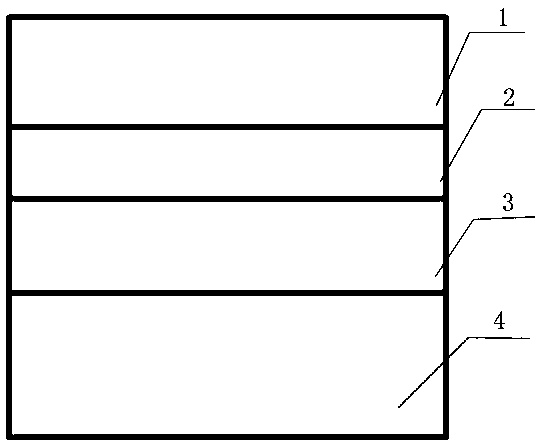An organic photomultiplier detector based on surface plasmon polariton
A surface plasmon and photomultiplier technology, used in photovoltaic power generation, electro-solid devices, circuits, etc., can solve the problems of slow response speed and poor carrier collection performance, and achieve the effect of improving the response speed.
- Summary
- Abstract
- Description
- Claims
- Application Information
AI Technical Summary
Problems solved by technology
Method used
Image
Examples
Embodiment Construction
[0013] Such as figure 1 As shown, an organic photomultiplier detector based on surface plasmons, its structure is: 180nm thick indium tin oxide (ITO) as the anode, 20nm poly(3,4-ethylenedioxythiophene)-polyphenyl Ethylene sulfonic acid (PEDOT:PSS) is used as an anode buffer layer, organic matter P3HT:PC with a mass ratio of 100:1 71 BM is used as the active layer, and the integrated silver nano grating (Ag metal grating) matrix and silver film (Ag film) are used together as the back electrode (cathode) of the battery. The cross-sectional width of a single silver column in the silver nano grating matrix is 20 nm The square, the height of a single silver column is 32 nm, and the structure is ITO (180nm) / PEDOT:PSS / (20 nm) / P3HT:PC 71 BM(40nm) / Ag metal grating / Ag film(200nm)). The silver film can be obtained by vacuum evaporation; the silver nano grating matrix can be obtained by laser lithography; and other organic functional layers can be obtained on indium tin oxide by spin ...
PUM
 Login to View More
Login to View More Abstract
Description
Claims
Application Information
 Login to View More
Login to View More - R&D
- Intellectual Property
- Life Sciences
- Materials
- Tech Scout
- Unparalleled Data Quality
- Higher Quality Content
- 60% Fewer Hallucinations
Browse by: Latest US Patents, China's latest patents, Technical Efficacy Thesaurus, Application Domain, Technology Topic, Popular Technical Reports.
© 2025 PatSnap. All rights reserved.Legal|Privacy policy|Modern Slavery Act Transparency Statement|Sitemap|About US| Contact US: help@patsnap.com


